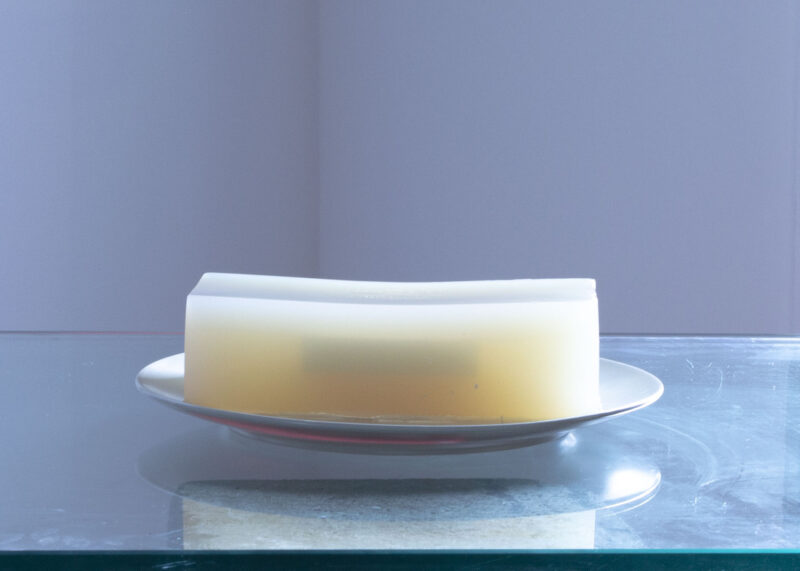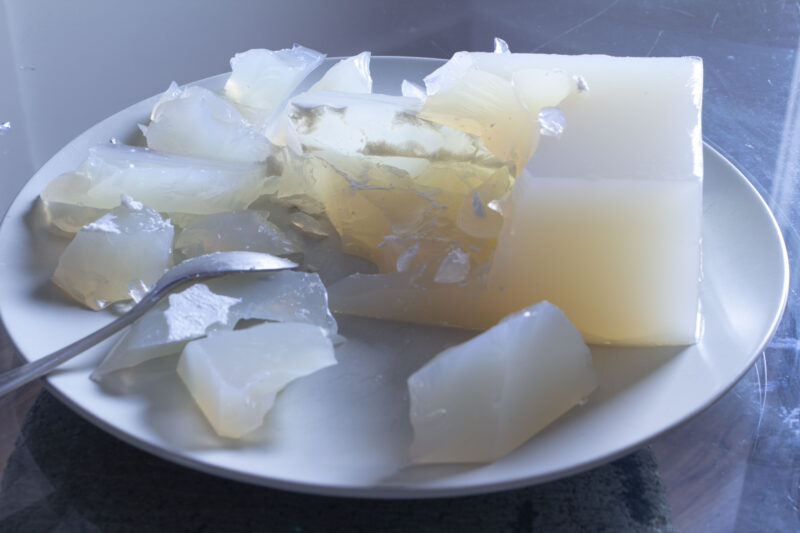Hương Vũ shares a dynamic multimedia art piece that blurs the line between food and language, and love and hate, all the while creating space for people to experience the complex intimacy, darkness and polarity of mothers, daughters and femininity. The work centers around the youthful aspiration of growing into those we most admire and respect, whilst dancing with the specter of their failings and inadequacies.
Inspired by Ocean’s Vuong’s letter to his mother in the New York Times, this is for mẹ lives online as a borderless mailbox for Asian identified people to share stories rooted in mothers, motherhood, motherlands, mother-tongues and family.
Written Work: Years Of Fixations And Trying To Get Out Of It
Visual Work: Sweet Sweats


The Dreamwork:
I love her love her love her lover her, but does she? She moved away, she kept moving away from me, in disappointment, in discontent, was it me? I have not become successful in being her. I deny the love that ignores my own. Who could forgive the things that are embedded deeper than the umbilical cords. I came upon a room, behind doors and beyond times, they did not belong to my familiar homescape, perhaps because she had left, perhaps because I drove her away, and I was there, full of hatred. The hatred bellied in my lungs, it stopped me from breathing. My body circulation deformed, I thought of rock, solid, anger, then I wanted to chase her down, to kill her off. Stop that hatred. Stop the pain. Be in control. Once and for all. Kill her off then my anger would stop. To stop the mixture that could not be relieved by either being allowed to evaporate and disperse. The violence grew fast, it has been simmering for too long. Now condensed and solidified. This is my hatred for her. The guilt for hating another woman evaporated elsewhere. I did not care that I inhabited the female body and wanted to destroy another.
I said “no justification needed”.
Yet, I still saw myself through my dream and feared for the measures of my own self in that dream, an entity that could cause harm in the dreamworld reality— too inhuman. I shutted down that hateful landscape, ran to another infinity, but the abject anger resurfaced itself in a cold room. There sat a chilled piece of clear hatred. Inside the transparent rectangular block of anger, I saw something even more concrete, even imagined a light sweet aftertaste, another block of this pure white anger, silence. The place was quiet, I could hear my own heart beating. The beatings, I couldn’t do anything about this hatred covered in anger stored in a chilled room. Seeing the block, haunted by it because my brain had visualized this hatred to lead me through this dream. I couldn’t move, I just stood and remembered the dream before I flipped and rose up.

Reconsumption to disperse and redistribute:
Here is the hatred, assumedly for my mother, the ‘mother’, but it also portrays the womanhood, the femininity that every woman, perhaps specifically Vietnamese women, are born into, and the lack thereof what is truly hers, what is not a woman. Every instance that these identities of the woman being spoon-fed to me, I instantly defy, and the chain of reactions finally resulted in this outer body confrontation— the dream. I call it hatred because it fits the category of what people describe ‘hatred’ to be, but perhaps it is something else. The realization of why there is this struggle between the dynamic of my mother and I and what she signifies allowed me to understand categorically what is love and hatred. Somewhere between the lines of asking those questions, the fixations relaxed and dissipated.
I don’t believe I can grow with this fixation in hatred. And the clear relation to the dessert that I once called love, the scent of agar, its jiggly form, has resurfaced in the dream. Something she has given me, as a sign of love. I recognized this reformation of love into hatred, I recognize the inescapable hatred toward the identity that I should love and embrace, because I perhaps am not just female. My denials became hatred. If that was a pure embodiment of hatred. This violence, unradically, must go away. My solution is to create that form. Confront it. Consume it, because it does not go away by any other forms of discarding. We would fight again, then the anger would rise right there from the unconscious to the top of my lungs. Something I want to grow out of. When something becomes singular, it is frightening, so I should redistribute it again into my body, some will be outed as waste, but at least this time when it is re-consumed, and I would have learned of it.
Author Bio
 Hương Vũ is an interdisciplinary artist. She received her BFA in ceramics in 2018 at Maryland Institute College of Arts. Vu was born and raised in Saigon, Vietnam, at the time where its economy began to shift and headed for world integration. This shift situated her to be a part of a generation that must differ itself from the traumatic pasts with a strange confidence in the ambiguous future. Inspired by the unpredictability, Vu explores the visual definitions of textures in the themes of emotions, sensories, and sexuality. She employs personal rhythmic repetitions in the materials to contextualize the pounding memories of the traditional values; a personal narrative to the umbilical bond between land/non-land and motherhood/femininity. At the end, however, she focuses on the rhetorical sense of the future, either as a form of open-ended question or as resolute determination, for she is that generation of the future.
Hương Vũ is an interdisciplinary artist. She received her BFA in ceramics in 2018 at Maryland Institute College of Arts. Vu was born and raised in Saigon, Vietnam, at the time where its economy began to shift and headed for world integration. This shift situated her to be a part of a generation that must differ itself from the traumatic pasts with a strange confidence in the ambiguous future. Inspired by the unpredictability, Vu explores the visual definitions of textures in the themes of emotions, sensories, and sexuality. She employs personal rhythmic repetitions in the materials to contextualize the pounding memories of the traditional values; a personal narrative to the umbilical bond between land/non-land and motherhood/femininity. At the end, however, she focuses on the rhetorical sense of the future, either as a form of open-ended question or as resolute determination, for she is that generation of the future.


